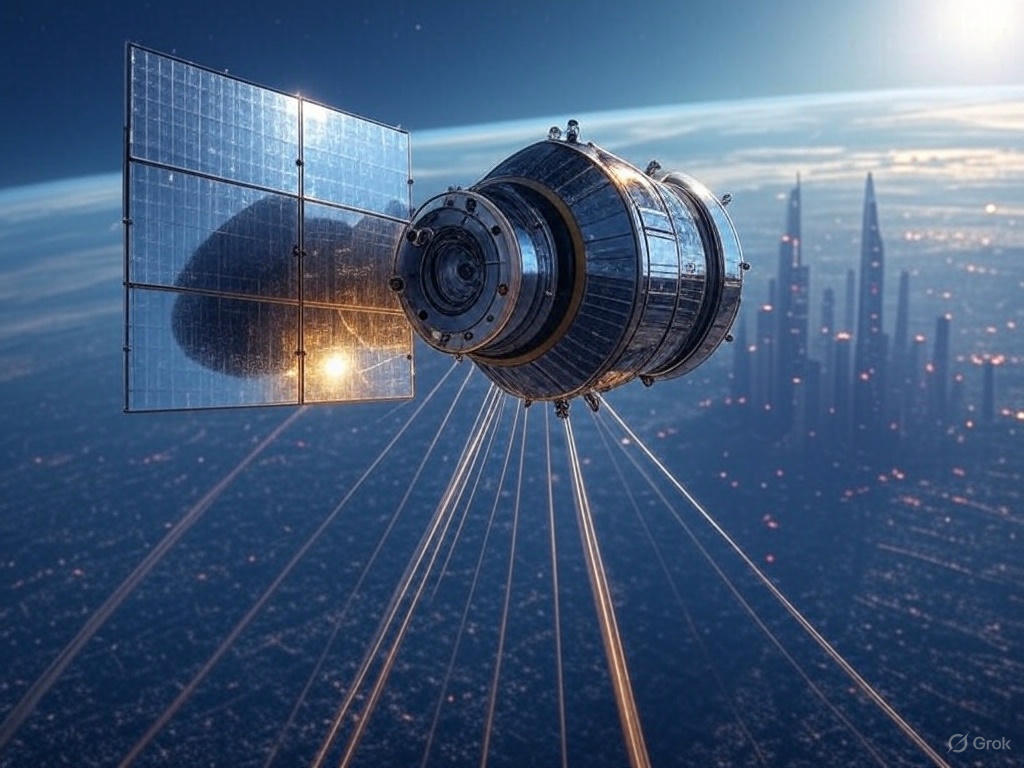Space-Based Solar Power (SBSP) has long captured the imagination of scientists, engineers, and visionaries. The core idea is bold yet elegant: collect solar energy in outer space—where sunlight is constant and unobstructed by Earth’s atmosphere—and beam it wirelessly to Earth. As global energy demand rises and the effects of climate change intensify, space-based solar power is gaining serious attention as a potential cornerstone in the future of clean, reliable energy systems.
What is Space-Based Solar Power?
Space-based solar power is the concept of deploying solar panels in Earth’s orbit, typically geostationary, to capture solar radiation and wirelessly transmit the harvested energy to ground-based stations. The energy is usually converted into microwaves or laser beams and directed to Earth, where it is received and transformed back into usable electricity.
Unlike terrestrial solar energy, which is limited by weather conditions, seasonal variability, and the night-day cycle, SBSP systems can collect solar energy 24 hours a day, 365 days a year. This capability offers a significant advantage in the pursuit of uninterrupted, high-yield clean energy.
The Technology Behind Space-Based Solar Power

Implementing SBSP requires a sophisticated integration of technologies across several key areas:
- Orbital Solar Arrays – Extremely large, lightweight solar panels positioned in orbit to maximize energy capture.
- Power Conversion and Transmission – Devices that convert the collected energy into electromagnetic waves (usually microwaves or infrared lasers).
- Ground-Based Rectennas – Specialized antenna arrays that receive the beamed energy and convert it back into electrical current.
- Launch and Maintenance Systems – Economical and reusable space launch systems are essential for the deployment and upkeep of SBSP infrastructure.
Technological milestones in recent years, such as Caltech’s successful orbital wireless power transmission in 2023, have made the path to real-world applications increasingly plausible.
Why Space-Based Solar Power Could Change Everything
Constant Solar Exposure
One of the most compelling aspects of space-based solar power is its continuous exposure to sunlight. Unlike ground-based systems that are affected by the Earth’s rotation and weather patterns, SBSP systems operate in constant sunlight, leading to dramatically higher energy yields.
A Clean Energy Alternative
SBSP emits no greenhouse gases during operation and can help reduce global reliance on fossil fuels. When combined with other renewable technologies, it could be instrumental in achieving international climate goals.
Strategic Energy Supply
SBSP also offers the promise of energy independence and resilience. By decentralizing power generation and reducing dependence on geographically concentrated energy sources, nations could bolster their energy security and disaster readiness.
Challenges and Considerations
Despite its immense potential, SBSP still faces several significant challenges:
- High Capital Costs – The expense of launching massive structures into space remains a major barrier, though decreasing due to advances in reusable launch technologies.
- Energy Transmission Efficiency – Beam transmission through the atmosphere remains an area of concern due to energy loss and potential risks to aviation and wildlife.
Orbital Debris and System Maintenance – With increasing congestion in Earth’s orbit, protecting SBSP infrastructure from debris and ensuring long-term operability requires sophisticated space traffic management systems.
Global Momentum and Strategic Investments
Several countries and private entities are actively exploring SBSP development:
- China has outlined plans for a one-megawatt space solar station by 2030.
- Japan’s space agency is testing microwave transmission technology for space applications.
- The European Space Agency has initiated research into SBSP as part of its broader space sustainability efforts.
These developments suggest that what was once speculative is now becoming a serious avenue of energy innovation.
Related Topics for Deeper Insight
For those interested in learning more about adjacent energy innovations, topics like emerging solar technologies, AI integration in grid management, and global energy storage strategies are valuable areas of exploration.
Conclusion: Fantasy or the Future of Energy?
Space-based solar power is no longer just a theoretical concept confined to science fiction. With accelerating technological advancements and increasing global interest, SBSP may emerge as a vital component of the future energy portfolio. It has the potential to offer continuous, emission-free electricity on a scale that could rival or exceed today’s largest terrestrial renewable systems.
While the path forward is still fraught with technical and economic hurdles, the vision of a sustainable, space-powered Earth is closer to reality than ever before. If successful, space-based solar power could redefine humanity’s relationship with energy for generations to come.





